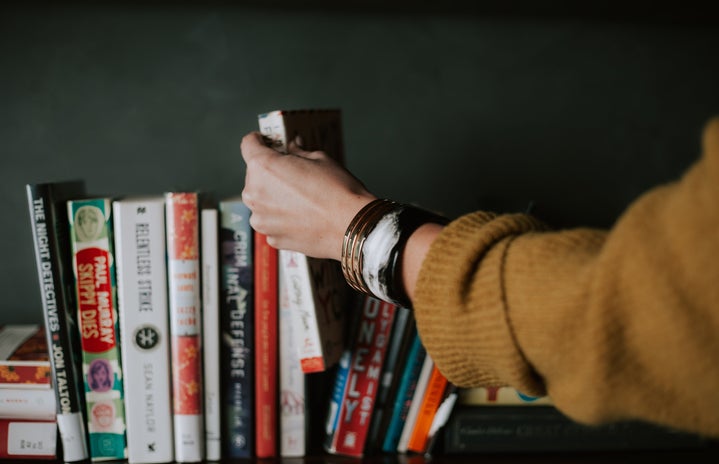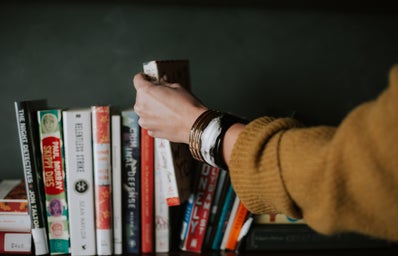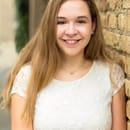A glimpse into my bookshelf
Enough about Beowulf and Don Quixote; I was going to have a say in what I spent my sunny summer hours doing, and that would be reading. Last school year made me want to read more books for myself than I ever had before school started back up again in September. Not like it was hard to do; I had only read a maximum of two or three books leisurely in past summers, taking in the stories and letting myself gradually sink into them. This time my attitude was different. I gave myself permission to fly through the pages of a book that kept me constantly on the edge of my seat. However, the thought of burying my head in someone else’s world wrestled with a looming sense of laziness and unproductivity. But after turning the first and the last pages of a book over the course of a few days, I felt accomplished and truly appreciative of where they took me. Below is my summer reading list, which includes classics as well as new picks and my thoughts towards where each one went along the way.
1. The Boy in the Striped Pajamas by John Boyne
I’ve never cried from reading a book, but this one just about did it for me. Centered on two young boys—one a German and one a Jew—this story takes place during World War II in Berlin and Poland. Although the boys never realize it and the narrator never acknowledges it, the book’s setting is the biggest German Nazi concentration camp, Auschwitz. The narrator is nine-year-old Bruno, allowing readers to see the story through the eyes of a little boy. What sucked me into the book was the way this affected the language. Every adult idea was replaced with a euphemism from a child’s vocabulary. Blue and white uniforms worn by the Jews in Auschwitz weren’t uniforms but rather striped pajamas. The barbed wire fence wasn’t a barrier to keep Jews away from the narrator, but was instead innocently thought to be something keeping the narrator from the Jews. And the people on the other side of that fence were nothing more than people from the neighborhood. When you’re ready to break this shorter one open, you’ll want to pack in lighter and more uplifting reads in between.
2. The Help by Kathryn Stockett
You may recognize this title from the hit movie released about a decade ago associated with some big Hollywood names, but what you don’t know is how much better the book is than the award-winning film. Set in the early 1960s in Jackson, Mississippi, Skeeter Phelan is an aspiring young writer different from the other young white women in town. She sets out to record first-hand accounts around town of women who work as maids for her friends. Minnie Jackson and Aibileen Clark are just two of the voices among many needing to be heard. These women work to break down the wall dividing Black and white people during the Civil Rights Era, but must do so carefully. Although I read this book over the course of a few days, I was constantly battling the urge to read it non-stop, and I can’t help but feel it would have been more impactful if I had dived into it even deeper.
3. The Devil in the White City: Murder, Magic, and Madness at the Fair that Changed America by Erik Larson
After the construction of the Eiffel Tower in Paris, France was completed, cities across the U.S. were in a race against time. Being the first American city to similarly impact the country in an innovative and ground-breaking manner was a top concern throughout the 1890s. I’ve never read a book that mentioned my hometown during the nineteenth century, but I have to say that it was pretty cool to see its name briefly in the pages of this book. While the book was partly about Chicago during a period of competitive growth, it also dealt with the beginning of a notorious period of murder and crime. I enjoyed learning about Dr. Holmes, the man behind the murder of at least twenty-seven women during this time. It marks the earliest known period of murder and violence against specifically young women from this book’s setting in Chicago, to New York City, to Whitechapel, London. In case it wasn’t already obvious, I enjoyed the mystery and crime aspect of this book more than the architecture and structure of the 1893 World’s Fair. Besides my fascination with this era in general, I also enjoyed learning about what life was like before such influential inventions that people today could never imagine living without.
4. The Lamplighters by Emma Stonex
In a review, this book was described as part mystery, part love story and part ghost story. I have to say I completely agree. Originally, I was drawn to this idea because of my ancestors, who were lighthouse keepers on Lake Michigan. Based on the disappearance of three lighthouse keepers in the nineteenth century, Stonex transports her audience between when the keepers were alive, out at sea, and decades later when their loved ones are still grappling with the mystery of it all. Throughout the plot, I couldn’t help but think of this as a who-done-it because while readers are given numerous perspectives to see events from, there are minimal leads into the truth. The ending left me rethinking every minute detail from the story to understand what made three men abandon their lives, never to be heard from again, and also what this means for the loved ones they left behind.
5. The Silent Patient by Alex Michaelides
Never before have I been so caught off guard by a plot twist while also understanding immediately how much sense it makes. Alicia is a young woman who kills her husband one day after he comes home from work. Years later, she still hasn’t spoken a word and can be found at a secluded facility in London where she meets Theo Faber. A psychologist struggling in his own marriage, Theo faces numerous challenges while interacting with Alicia and utilizes journal entries she wrote in the time leading up to the murder to better understand her. It is no understatement to say I did a lot of traveling this summer through reading these books, but this one took me to the most places. As the best book on this list, I can’t recommend The Silent Patient highly enough to anyone who finds psychological mystery thrillers intriguing.
6. A Good Girl’s Guide to Murder by Holly Jackson
I would describe this book as a coming-of-age crime mystery about a high school girl wanting to solve her town’s only criminal case, which has gone cold. She digs through old records, interviews and connections to discover why Andie Bell’s murder never resulted in justice for the Bell family. Right off the bat, the reader is aware of Pip’s intention to prove the guilty perpetrator innocent, which introduces the protagonist as an ambitious, young private investigator type of true crime junky. This would be a great read for someone who likes Nancy Drew and her case files or Clarice Starling from The Silence of the Lambs.
7. The Phone Booth at the Edge of the World by Laura Imai Messina
Laura Imai Messina delivers a heart-breaking interpretation of grief over the loss of those we love and to what extent our loved ones are still with us every step of the way. In March 2011, an earthquake and tsunami, known as the greatest disaster of East Japan, killed more than 19,000 people. Following the country’s devastation, a telephone booth was built in an area most hard hit by the tragedy, Otsuchi. When the telephone is lifted from the receiver, it is believed that your loved ones can hear your words being carried through the wind of the mountains. The author discloses that there is nothing fictional about the telephone booth itself or its importance; thousands of people make the pilgrimage to Otsuchi every year to talk to those no longer physically with us. Reading The Phone Booth at the Edge of the World reminded me what it means to heal after loss and how our family doesn’t leave us.
I can’t recommend a summer book club highly enough, even if it’s just for you. There’s no better feeling than being so invested in a book that you read it cover to cover in a matter of a few days. The feeling you’re left with after reading the last sentence is not only one of accomplishment but also one of realization as to where you were physically brought to and where you are now. Hopefully I’ve inspired the same eagerness to crack open stories on the bookshelf that you haven’t explored before.





